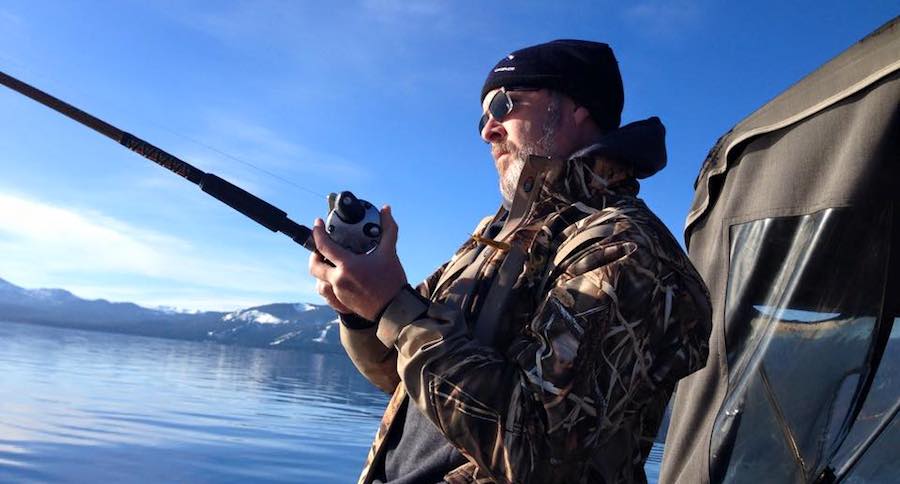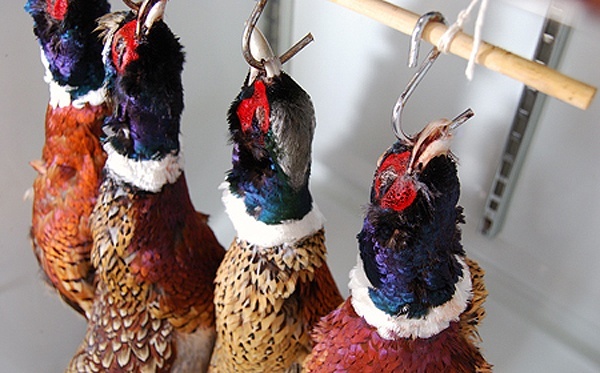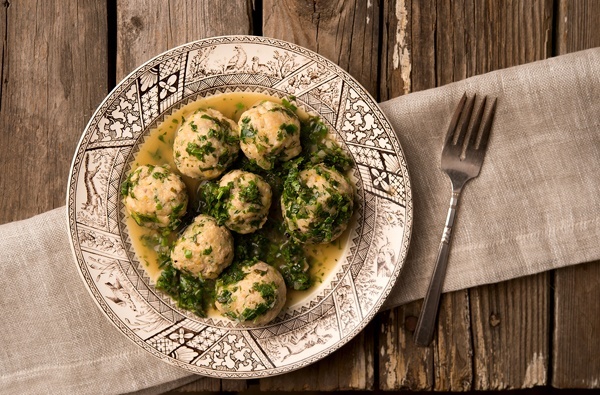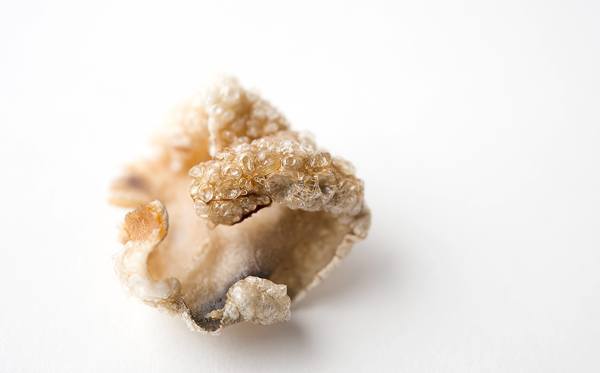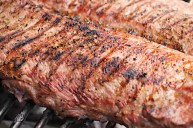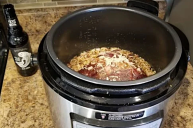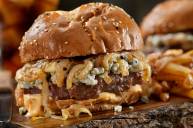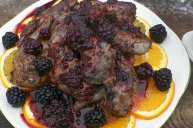Chef Hank Shaw answers six questions about wild foods, hanging pheasants, and what springtime dish he really, really loves.
It seems unlikely that any outdoor sportsman who has ever stood over a stove hasn't heard of Hank Shaw. Shaw has written extensively about cooking wild foods in a number of outdoor sports and culinary magazines, and has authored two "must-have" books ("Hunt, Gather, Cook: Finding the Forgotten Feast" and "Duck, Duck, Goose: The Ultimate Guide to Cooking Waterfowl, Both Farmed and Wild"). He has also achieved great success with his James Beard Award-winning blog Hunter Angler Gardener Cook, and regularly runs classes large and small on the subject of cooking wild foods.
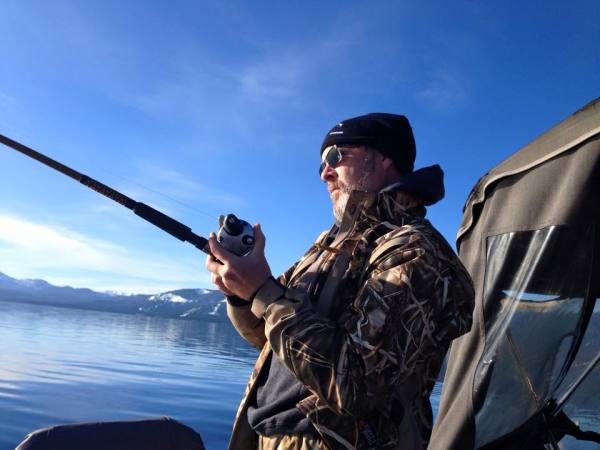
Recently I contacted Hank and asked him if I could get his response to a few questions. He did not disappoint, and answered my questions in detail, with passion and humor. I tried to cover a variety of bases with my questions, with nods toward upland game birds, waterfowl, fish, seasonal considerations and actual in-the-kitchen advice.
After cutlery, what would you consider to be the most useful tool or piece of equipment that a home-cook should have in his or her kitchen? In other words, what single tool makes a big difference to the home-cook producing consistently good dishes?
"Hard to say, but my first thought is a good saute pan. I use a stainless steel All-Clad and I beat on it pretty hard, but it's just as good as when I got it a decade ago. A good pan heats up fast, is light enough to flip things in it without tearing something in your wrist, has sloped sides and cleans easily. Much of my cooking is done either in this pan, or in an enameled Dutch oven.
After that, I'd say the next most important thing is a gas stove - ideally a gas stove with a power burner, like 27,000 BTUs or so. Why? No professional cook works on electric. Gas is much more precise. And the power burner because much of restaurant cooking is done on roaring heat, which creates different effects in a dish than if you did the same thing on a weak burner. Stir fries and sautes, plus the browning of meats are all vastly better if you do them over a ferocious gas burner."
With the release of your last book, "Duck, Duck, Goose," you've become known for your expertise with that particular protein (waterfowl). What's your standard good advice for hunters on how to handle waterfowl immediately after shooting in order to ensure that they get the most and best from it that they can?
"Sort your birds. Some are fine-skinned, like spoonies, all sea ducks, and most divers. Some should be set aside for plucking, like specklebelly geese, pintails, green or blue teal, wood ducks or nice fat mallards. Of the 'good' birds you have, pluck those that have been well shot, i.e., not center-patterned. Skin the shot-up birds.
Keep the birds cool. Don't stack them unless it's very cold out - stacking can cause ducks to sour in hours when the weather is warm.
Consider hanging skinny ducks and geese. Waterfowl can be up to 30 years old, and are routinely 10 or older. That's an incredibly old animal, and the dry aging process works well for them. Only problem is that waterfowl fat can go rancid very fast. But on skinny birds, hanging in a cool, shady place - say, 50°F or thereabouts - whole and ungutted will tenderize and improve their flavor. Even a fat duck will benefit from a day or two like this, and skinny ones up to a week. Caveat: Don't do this with gut-shot birds. They will spoil and turn green."
A fresh pheasant is a boring chicken. An aged one is something magical. You must hang in the feathers and ungutted or the magic won't happen.
You've done some really interesting experiments with hanging game birds, in the manner common decades ago to enhance flavor. How would you describe the difference that controlled hanging and aging has on game bird edibility compared to the current standard practice of cleaning, freezing, and/or cooking fresh without aging?
"In general, hanging heightens flavor. But even before you get to hanging, you should know that all meat needs to go through rigor mortis before it should be eaten, or else it will be tough and unhappy. So no one should freeze any meat that was killed that day, and even eating a bird you shot in the morning can be iffy. The next day is best if you want to eat a bird fresh.
With waterfowl, cooking fresh is ideal if the birds are fat. For skinny birds, see my previous answer.
Hanging really comes into its own with upland birds. A fresh pheasant is a boring chicken. An aged one is something magical. You must hang in the feathers and ungutted or the magic won't happen. The feathers protect the skin from drying out, and the guts have the enzymes you want to tenderize the meat. The same enzymes exist in the meat itself, but if you've ever tried to pluck an already gutted bird it's a massive pain. Your reward will be super tender meat, with a heightened flavor that isn't quite chickeny, but is very much poultry. Is it gamey? Yes, but in a good way."
Any new and exciting food items come across your kitchen counter top lately?
"I get excited by stuff all the time. My recent favorites are black radishes, which are terrible raw but get incredibly earthy and wonderful when quartered and roasted; roasted squash seed oil, which is to Northern European cooking what fine olive oil is to the Mediterranean; and agretti, an unusual Italian green that looks sorts ferny but is crunchy and a bit salty. It's a fantastic thing to put on a plate because it has a lot of flavor and texture, and it looks pretty."
What are you looking forward to most this year, culinarily, as winter turns to spring?
Spring might be my favorite season. It is the season of green and yellow, just as summer is the season of red food. Everything is lighter, fresher, brighter - even in early spring, when it can still be cold out, you switch from red wine in a braise to white, and rely less on roots and more on the new greenery that is just starting to emerge.
Specifically speaking, my go-to ingredients for spring are fresh fish, clams, wild turkey, rabbit, nettles, wild chicories and other greens, wild asparagus, morels, fiddleheads, cholla buds - the unopened flower bud of the cholla cactus, which grow in the Southwest - fava beans and peas, fennel... hell, I could go on and on. But the backup player to a lot of this is saffron. I love, love, love the combination of saffron and spring greens, both for the grassy flavor and the pop of vivid canary against the emerald of spring.
In my region of the upper Midwest, ice fishing is still going strong. Do you have any simple, knock-your-socks-off bluegill, walleye or even sturgeon recipes that you'd encourage folks to try?
"I have many. For panfish, which are mostly too small to fillet, you can do an early spring perch chowder, or make fish meatballs or dumplings - I make a mean German pike dumpling, which I float in a dark-but-clear mushroom broth. Sturgeon? Well, that's a whole other animal. I cure it, sear it in a pan, poach it in olive oil or duck fat, fry it in nuggets, and even make 'pork' rinds from the skin. Sacramento, where I live, is home to one of the last great sturgeon fisheries in America. I try to catch at least one keeper a year."
I'm anxious to try Hank's fish skin chicharrons or "pork rinds" during the upcoming salmon season or possibly with sturgeon. Saffron and spring greens is also definitely on the menu this year. After all, if Hank Shaw gives three "love"s to a dish, you can pretty well bank on it being something special.
Like what you see here? You can read more great articles by David Smith at his Facebook page, Stumpjack Outdoors.
